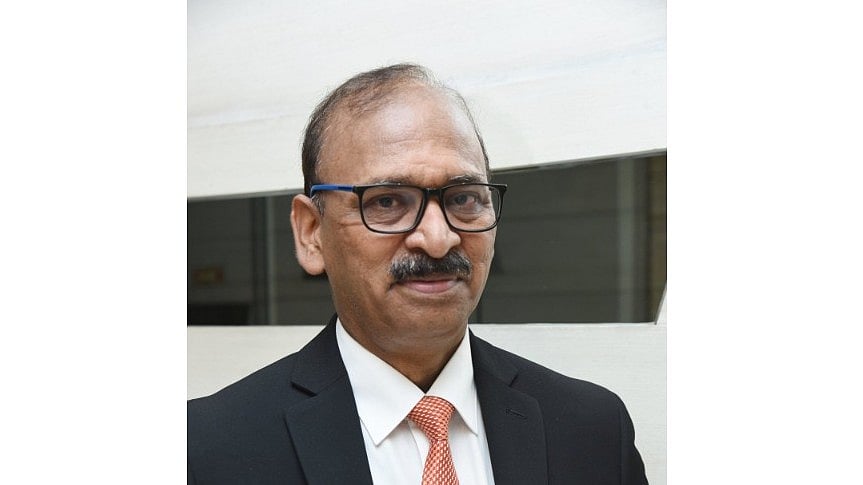
FIEO Director General & CEO Ajay Sahai.
Credit: DH Photo
New Delhi: Persistent geopolitical tensions, especially the Red Sea conflict, have badly hit international trade. Non-tariff barriers like European Union’s Carbon Border Adjustment Mechanism (CBAM) and the recent curb by Hong Kong, Singapore and some other countries on the sale of popular Indian spices brands pose challenge to India’s ambitious target of achieving $2 trillion exports ($1 trillion each for merchandise and services) by 2030. Speaking to DH’s Gyanendra Keshri, Federation of Indian Export Organisations (FIEO) Director General & CEO Ajay Sahai talks about the challenges facing the Indian exporters and the future outlook. Edited excerpts:
India’s exports have been muted in the recent months. Last fiscal, merchandise export was around 3% lower when compared with the previous year. How do you see this trend?
The recent challenges are because of the global uncertainties. The persistent conflict in the Middle East & Red Sea has impacted our trade. The uncertainties continue in the short-term as inflation is still at an elevated level, though on a declining trend. However, the long-term roadmap for India’s export is extremely good. The kind of ecosystem which has been built by the Government is helping the export. Processes have been made easier, automated and digitised. However, there is an element of unpredictability.
Can you elaborate on the element of unpredictability which is impacting exports?
There are some procedural issues that impact exports. For example, if I am sending 100 consignments through customs and under the risk management system 5% of it has to be checked. On the face of it you can say that for 95% of the shipments there is no worry. But look at it from an exporter perspective. The exporter does not know which 5% shipment will be picked. Suppose the examination happens physically and it takes 5 days time, the shipments get delayed for 5 days. These elements of unpredictability lead to a lot of problems for exporters as he has to factor in additional 5 days time for all the 100 consignments being unaware which one will be picked under RMS for physical examination. That’s why in our discussions with the government we have been saying that wherever this element of unpredictability is there, please try to compress the time.
What is the outlook for India’s exports?
Medium to long-term outlook of India’s export is quite encouraging. But we feel that there will be a change in the profile of exports, both for the merchandise sector as well as the services sector. In the merchandise sector we will see much more exports from technology and knowledge-driven sectors. Technology-driven sectors include machinery, electrical, electronics and telecommunication. Knowledge-based sectors include pharmaceutical, chemical, and medical diagnostic equipment. Major global trade happens in these segments. Traditionally, India has not been a major player in tech and knowledge-driven sectors. However, this is changing. In the coming years I expect increased focus on these sectors.
In the services sector, we have moved to some extent from IT and IT-enabled services to other services. In the coming years I expect the share of professional services like engineering, legal, architecture and business management services will go up. Audio-visual, gaming, transport services and tourism sectors will contribute immensely to services exports.
What about jobs? Tech and knowledge-driven sectors will create fewer jobs.
For us the employment generating sectors like apparel, leather, gems & jewellery, carpets, handicrafts, agro and processed food sectors are equally important. They may not contribute that much in export numbers but they are extremely important for creating jobs in the country. If you look at billion dollars of mobile phones, it may create 5-10 thousand jobs, but a billion dollars of export of textiles may create 50 thousand odd jobs. That’s why our export strategy has to be a mix of the two: boosting both the sunrise and traditional sectors of exports. The export value will come increasingly from tech and knowledge-driven sectors.
The regulations like ‘carbon tax’ in the EU are bound to create barriers for Indian exporters. How should India deal with such barriers?
Several non-trade issues impact trade. In the name of climate change a lot of barriers are being created. They are non-trade issues, but they are increasingly becoming a part of the trade negotiations. These are the issues we have to deal with. You may delay it for a few years, but you can’t escape it. That’s why our view is that let’s engage with the industry. Try to explain to the industry what are these changes which are required and handhold the industry. Particularly MSMEs are not equipped to handle these kinds of problems.
How do you see the curb on the sale of Indian spices in Hong Kong, Singapore and some other countries?
I think this is more a regulatory and health issue. Look into those spices which those countries are objecting to. They are concerned about their consumers, but what about the Indian consumers? We are also consuming them. So we must focus on standards. If the domestic industry is adhering to the standards, exports become easy to them. They don’t have to do anything extra to go into the export market. Once you put standards on the domestic one, you can always regulate imports as well.